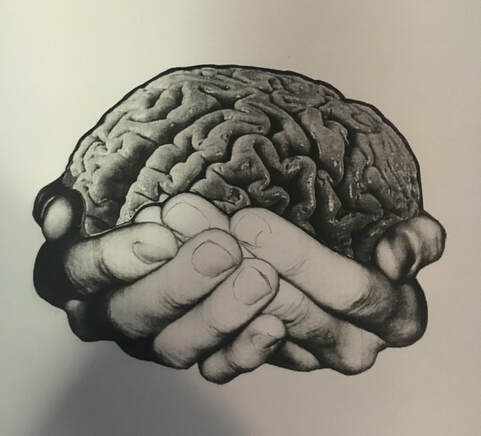Treatment centers and 12-step communities need to begin normalizing dissociation within the addicted person’s experience. Trauma and dissociation are often left out of the discussion in addiction treatment and recovery worlds. Survivors of abuse, neglect, abandonment, and other traumatic experiences note with consistency and frequency the value of compartmentalization plays in daily life functioning and avoidance of traumatic memories. As an addiction and trauma specialist, I’ve heard countless clients describe how and why it became necessary to stuff events, emotions, sensations, thoughts, actions, and images deep into the catacombs of the psyche. The self that seeks recovery may sometimes feel like a fraud, fake, or not real, as a result. And this can make the phrase defects of character in Step 6 difficult for addicted survivors of trauma to navigate. Looking at Step 6 through the lens of structural dissociation, may offer the field, recovery communities, and people we serve new insight into both trauma-informing and dissociation-informing the steps. What we commonly call defects of character within 12-Step Literature can be more accurately viewed as dissociative parts of self that impede spiritual progress, acceptance, connectedness, healthy relationships, and recovery
The conception of dissociative parts of the personality is not new. The theory of structural dissociation of the personality is a cogent, comprehensive, and concise description of dissociative parts. The theory holds every person has what is commonly referred to as an Apparently Normal Self/Part (ANP). The ANP is the survivor self or the core persona that is seen by others in public, holds a job, raises a family, forms attachments, and does everything that we often ascribe to the executive functioning in our brains. In response to a traumatic event the ANP fragments with the formation of an Emotional Part (EP). The EPs form to protect the ANP from the wounding that has occurred.
The self as EP displays evolutionary defense mechanisms, emotional reactions, and action systems to protect the core self. Action systems guide us to notice and be drawn to stimuli. They restrict our field of consciousness to relevant stimuli and promote certain action tendencies while inhibiting others. For example, when a fire alarm suddenly goes off, the self as EP may signal “Danger, Danger, Danger!” and the action system related to panic may activate. The action system related to rational thought and decision making may be disinhibited. These mechanisms include responses based on flight, fight, freeze, and submission. If a dissociated part is fixated in a particular action system or subsystem, they may be unable to cope or perceive with their situations because their perceptions are colored by the goals, and a restricted field of consciousness will be restricted to stimuli relevant to that subsystem.
I believe Dr. Bob and Bill W.’s vision of step work helps us to heal our structural dissociation. Step Six invites recovery seekers to dig deeply and invite our EPs into their healing journey. Up to this point in our recovery experience we have accepted the nature of our addiction, we took steps to find a new path, embraced a belief that a power greater than ourselves could restore us to sanity, made a searching and fearless inventory, faced our dissociation, and now we are tasked with integration. Bill W.’s commentary on Step Six hones in on the addicted person’s compulsive tendency for self-destruction and annihilation. We work against our instinct for self-preservation. The commentary goes on to describe structural dissociation like language in discussion of how our drives far exceed their usefulness. The founders of Alcoholics Anonymous understood parts of self. Bill W. writes in 12 Steps and 12 Traditions commentary on Step Six: “When our instincts drive us blindly or willfully demand that they supply us with more satisfaction or pleasure than are possible or due us.” He is talking about an EP. Bill recognized EPs operating within recovery seekers more than 80 years ago.
The goal of Step Six is not to eradicate our EPs. Total integration of all dissociative parts of self will not happen overnight. Some parts of self will mature or extinguish. Others will take a lifetime to heal. Parts work, trauma work, and working the steps are circular pursuits. We may need to go through the Steps several times to gain a new way of relating in the world. The wisdom of this Step is we are cautioned to “be content with patient improvement.” It is important to seek proper therapy with someone skilled in dissociation and parts work who can help you understand the emotional parts of your personality. In our parts work some of our parts may not want to work on the spiritual aspects of the program. Some might attempt to destroy the whole system. We did not will these EPs to exist. Our minds fractured in a beautiful way to keep us safe, secure, and protected. However, the actions, thoughts, and impulses of our EPs caused us insurmountable problems as we sought to change old patterns.
Change is difficult. Sometimes we get into a routine and become complacent with our EPs. Take procrastination, for example. By not completing a task on time, one does not have to risk failure. This EP could be protecting us also from people hurting us by seeing our vulnerability. Turning in assignments late or showing up on time for appointments means our EPs remain in control of who gets to see our vulnerable side. Procrastination, like other destructive tendencies, could be an EP part designed to hide reality from us.
Our EPs have secondary gains which make it difficult to heal them. Skillful work in this area will explore the systems and rules at play. We will not be perfect in this work nor do we need to be. In Step Six we work to renegotiate the boundaries with our EPs and the alliances between them. Our work here is to meet our needs in more adaptive ways so our lives as ANP is fuller, richer, and more meaningful.
In my recovery experience I relied heavily on EMDR therapy, sponsorship, and the 12-step recovery meetings and literature to heal my fragmented self. I believed I could be restored to sanity. I trusted my Higher Power would allow me to get where I needed to go in the often hard and emotional trauma work, I set for to complete. I had a mindfulness and yoga practice that helped me settle inward to listen to my emotional parts. I had faith in my therapist who guided me through parts work and trauma reprocessing. I was able to see for the first time how my EPs impinged on my ability to live unchained. My EPs were my minds grasps of relating to a world which no longer existed. We must face facets of our personality which do not paint us in a good light. The Shadow side of the personality we must not fear. Step 6 and parts work are reparative processes. What I have learned is I do not have to live in survival mode any longer. Because of this work I can meet needs without reliance on old compulsive behaviors. I can risk authenticity and vulnerability without fear of rejection.





2 Responses
Even though I have my own substance use history, I really did healing within the 12-Steps of ACA (or ACoA depending on where you land in the country). The explanation of Step 6 and the connection to structural dissociation is so helpful, I feel like, no matter what program you do the Stepwork in. I had an experience at a job where I broke down and sobbed that ugly crying sob after being written up. My supervisor had suggested I do some healing and I went back to ACA and almost immediately there was an internal sigh of relief and restorative experience. I recognize it is something I should go back to even now and do another set of Steps, and it helps to see the Steps from this lens. Thank you!
I appreciate the connections that are made and maintained throughout this article and most (if not all) ICM material between addiction, trauma, and dissociation. I feel like these three fields are linked and that in order to have a truly good understanding of one, it is necessary to have knowledge of all three.